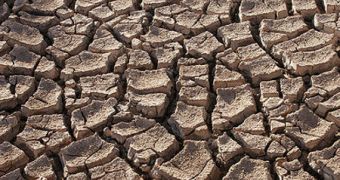As climate change is beginning to make its effects felt more and more, and Western Hemisphere is exposed to an increased risk of experiencing more intense droughts in the coming years.
A group of investigators says that extreme drought will very likely affect the United States and other countries in the Western Hemisphere within the next decades. The announcement was made Tuesday, October 19.
Researchers say that the amount and intensity of the upcoming droughts will dwarf in scale anything in recorded history, simply because we never had global warming on this scale in the past.
“We are facing the possibility of widespread drought in the coming decades, but this has yet to be fully recognized by both the public and the climate change research community,” explains Aiguo Dai.
“If the projections in this study come even close to being realized, the consequences for society worldwide will be enormous,” says the scientist, who was a member of the study team behind a new investigation.
Dai holds an appointment at the US National Center for Atmospheric Research (NCAR), which is funded by the National Science Foundation (NSF).
He explains that the array of negative effects brought on by droughts is massive. For instance, drier soils mean less crop yields over prolonged periods of time, which can lead to famine.
Additionally, the amount of precipitations falling over drought-affected areas decreases as well, which means that less water is accumulated in lakes and reservoirs supplying the precious liquid to irrigation systems and the general population.
To top things off, Dai says that these are only the predictions that were derived from modeling the future based on current levels of greenhouse gas emissions.
The intensity of future droughts will be influenced by a wide variety of factors, including land management and development, building dams on rivers, increased GHG emissions, conservation measures and so on.
The results the NCAR team obtained are unfortunately not new. They coincide with the ones developed by the UN Intergovernmental Panel on Climate Change (IPCC) back in 2007.
At the time, the official UN report showed that precipitation patterns will suffer a shift as global warming progresses, which would translate in more water falling over areas that are already wet.
It was also estimated that subtropical regions will receive diminishing amount of rain, whereas regions at very high latitudes will be drenched.
Additional details of this investigation appear in the latest issue of the esteemed scientific journal Wiley Interdisciplinary Reviews: Climate Change, LiveScience reports.

 14 DAY TRIAL //
14 DAY TRIAL //